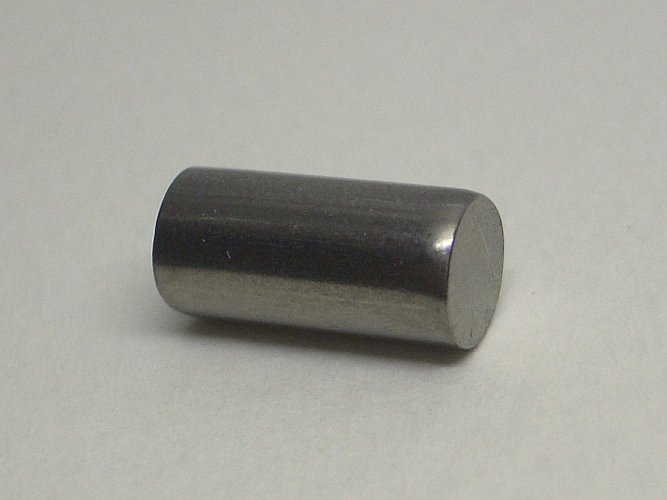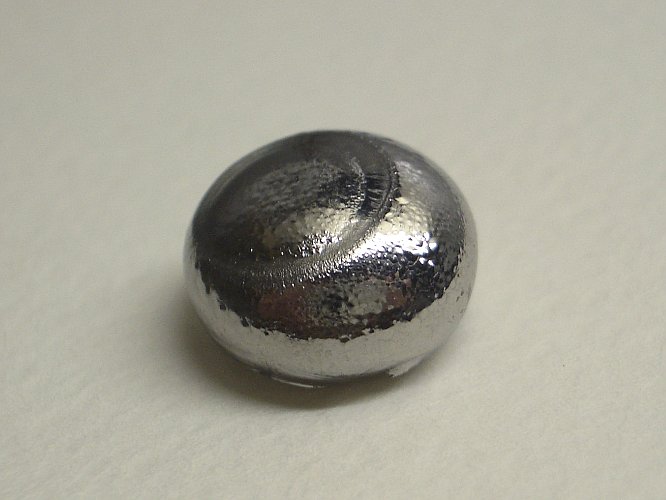


Niobium and tantalum
Niobium and tantalum are silvery metals, which usually are somewhat dull gray, but tantalum, when arc-melted, can be really shiny. The two pictures below show a sample of niobium and an arc-melted sample of tantalum. The left picture shows niobium, the right picture shows tantalum.


The metals in the massive state are remarkably inert, like their predecessors zirconium and hafnium. Even hot concentrated mineral acids are not capable of dissolving the metals at a reasonable rate. In the case of tantalum, only hot oleum or a hot mixture of nitric acid and hydrofluoric acid is capable of attacking the metal at an appreciable rate. This shows, how inert these metals are. The metals also are not attacked by concentrated alkalies. The inertness of these metals is explained by assuming that a thin, but very strong and inert oxide layer is formed, which protects these metals against corrosion.
The elements can be obtained from eBay from several suppliers. They, however, are quite expensive in the pure state. Given their inertness, limited aqueous chemistry and relatively high price, these metals can be regarded as not very interesting for the home lab.
Compounds of these metals are not available for the general public. On the other hand, these compounds, if they were available, also are of very limited interest for the home chemist, due to the lack of interesting aqueous chemistry. These elements almost exclusively exhibit the +5 oxidation state. The oxides Nb2O5 and Ta2O5 are very inert and can only be dissolved in concentrated hydrofluoric acid.